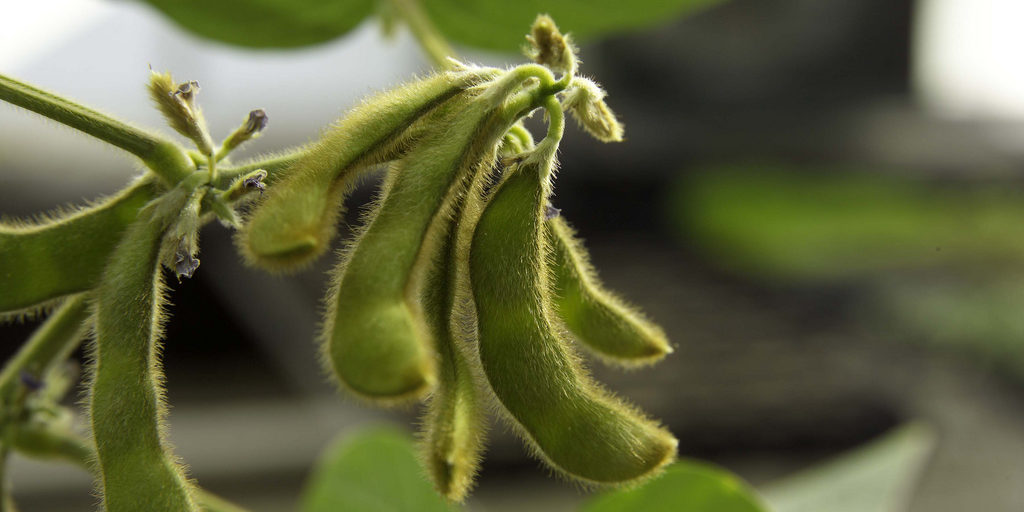Three Steps to Finding Soybean Varieties that Are Worth More
As you watch your soybean crop mature and start estimating yields, you might also start thinking about which varieties you’ll plant next year. While you look through mounds of material about endless soybean varieties and how they’ll perform in your field, remember to also check out a free tool from the soy checkoff that shows how those varieties can affect demand for your soybeans.
The checkoff’s Soybean Quality Toolbox, located at www.GrowSoybeanValue.com, calculates your soybeans’ estimated processed value, or EPV. This metric is based on oil and protein content. Those components drive soybean demand and the price farmers receive.

Soy checkoff farmer-leader Laura Foell, who farms in northwest Iowa, might look at test-plot results from Galva, Iowa, to find soybean varieties that produce greater oil and protein content without sacrificing yield.
Customers buy soybeans based on the amount of oil and protein inside – soybeans with greater oil and protein content are in greater demand, and better demand can lead to a higher price for farmers to receive. If farmers across an entire region consistently select higher-quality varieties yielding more valuable components, relative demand for the soybeans from that area will improve, and the price those farmers receive should increase as well.
“Farmers think they are getting paid on a yield basis, and while that’s partly true, they’re also getting paid based on the oil and protein content of their soybeans,” explains Laura Foell, chair of the United Soybean Board’s Meal Action Team and a soybean farmer from Schaller, Iowa.
Finding varieties that will produce higher value is just three steps away with the Soybean Quality Toolbox:
STEP 1: Select your state and other source data: The tool features protein, oil and yield data from 16 states. Simply select the state, year and test plot that most closely resemble your growing conditions.
STEP 2: Choose which type of soybean variety is best for you: For example, the tool can filter your results by conventional, Roundup Ready and Liberty Link production systems, as well as seed company, maturity group and even specific variety.
STEP 3: Set current market prices: This allows the tool to calculate how much value each soybean variety is expected to hold for you.
Next, you’re ready to browse the best varieties.The tool displays how various soybean varieties performed in the chosen test plot in terms of protein, oil and yield and calculates the value of each variety based on those factors.
Foell says seed selection is the best way to improve soybean quality to meet customer needs.
“Farmers should talk to their seed representatives about high-quality varieties,” Foell says. “Processors pay us for the components of our soybeans, which they sell to the animal agriculture and food industry sectors. Demand from those major customers is based on the quality of our crop.”


